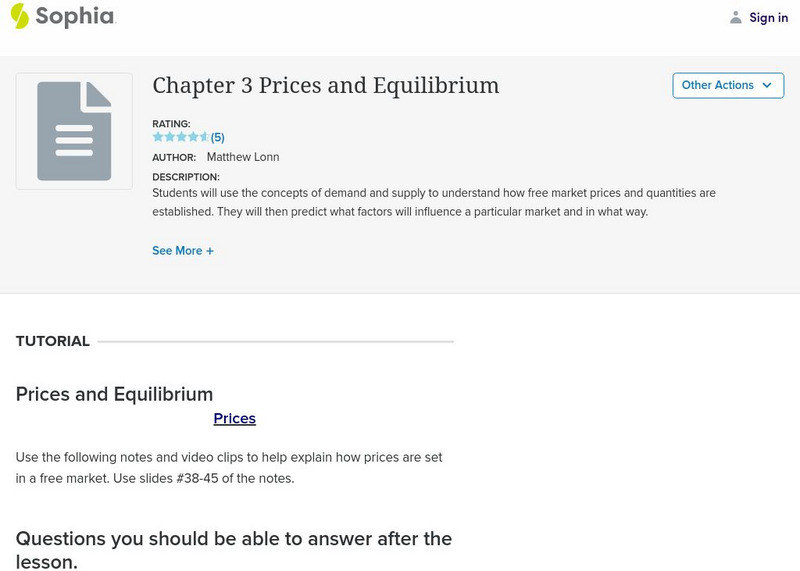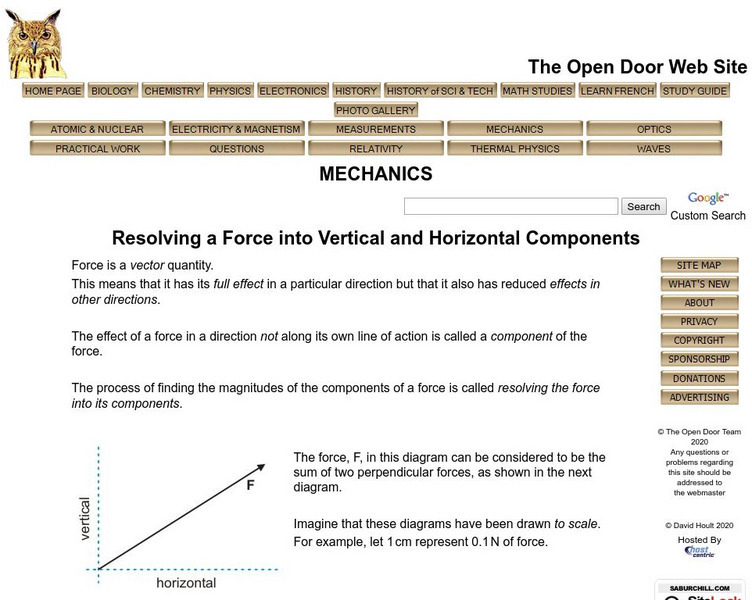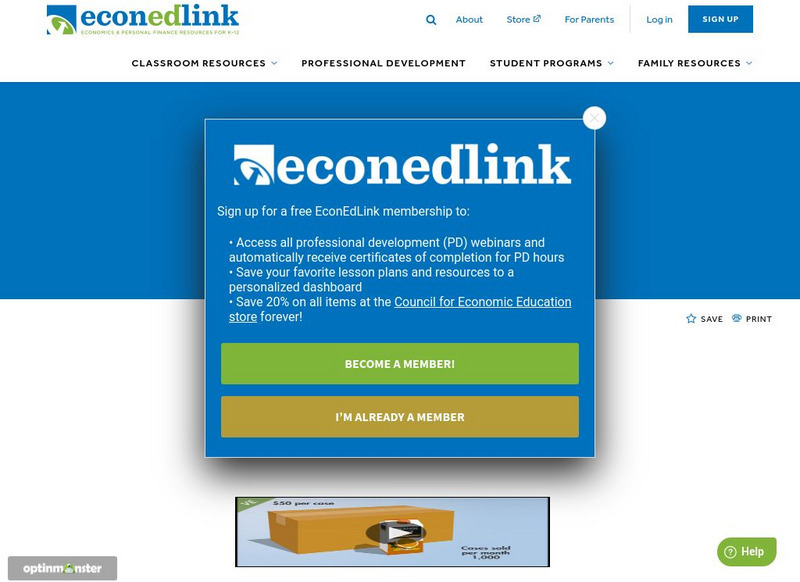Khan Academy
Khan Academy: Market Equilibrium
Practice what you've learned about finding equilibrium price and quantity both intuitively and graphically in this exercise.
Sophia Learning
Sophia: Prices and Equilibrium
Through a series of resources, students use the concept of demand and supply to explain how free market prices and quantities are established, define equilibrium, and understand the idea of shortage and surplus.
Khan Academy
Khan Academy: Lesson Overview: Taxation and Deadweight Loss
This article provides an overview of Taxation and Deadweight Loss. When a tax is imposed on a market it will reduce the quantity that will be sold in the market. Whenever the quantity sold in the market is not the equilibrium quantity,...
Khan Academy
Khan Academy: Market Equilibrium and Disequilibrium
Practice what you have learned about how a market generates an equilibrium price and quantity, and the cause of surpluses and shortages in this exercise.
University of Colorado
University of Colorado: Summary Table of Market Equilibrium
Chart that shows what happens to equilibrium price and quantity when both supply and demand remain constant or shift.
Khan Academy
Khan Academy: Price Ceilings and Price Floors
This article discusses how quantity demanded react to artificial constraints on price.
Open Door Team
Open Door Web Site: Physics Equilibrium of Forces
The process of finding the magnitudes of the components of a force, called resolving the force, is explained at this site.
Council for Economic Education
Econedlink: Profit Video and Quiz
This video teaches the concept of Profit. Profit is income received for entrepreneurial skills or risk taking and is calculated by subtracting a firm's costs of producing a good or service from the revenues received from selling the good...
Curated OER
Labor Market Equilibrium With a Payroll Tax
This site provides a good analysis of the concepts of marginal product, marginal revenue product, marginal costs, and how a monopsonist determines wages and quantity of labor hired.
Khan Academy
Khan Academy: Law of Supply
If the price of something goes up, companies are willing (and able) to produce more of it.
Khan Academy
Khan Academy: Law of Demand
If the price of something goes up, people are going to buy less of it.
Curated OER
Model of Monopolistic Competition
This site uses an example of "pushcarts on the beach" to demonstrate a monopolistically competitive market structure and how as more firms enter the market, price, quantity, and deadweight loss are all effected.
Council for Economic Education
Econ Ed Link: Henry Ford and the Model T: A Case Study in Productivity (Part 3)
Henry Ford's use of mass production strategies to manufacture the Model T revolutionized industrial manufacturing. This 3-part learning unit provides students with the story of Henry Ford and the Model T from an economics perspective....











